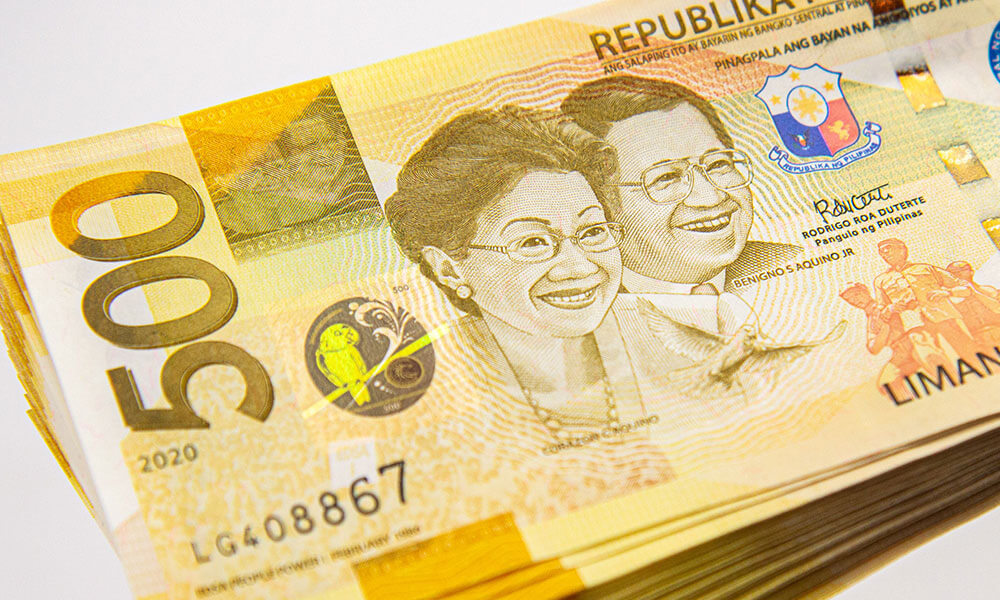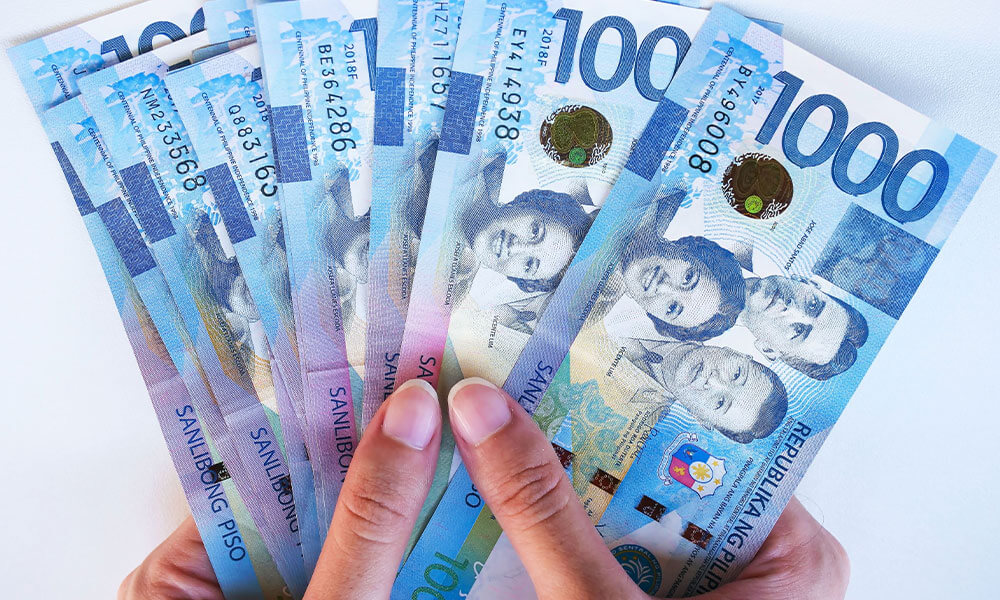
Growing your wealth with Pag-IBIG and MP2 Savings Accounts
While setting money aside in a savings account is a good idea, your money may not be worth as much when you come to use it further down the line due to factors like inflation.
This is why it’s important to make your money grow.
Luckily, there are two government-guaranteed programs for Filipinos looking to increase their savings with minimal risk: Pag-IBIG Regular Savings and MP2 Savings.
Before we discuss both programs, let’s talk about Pag-IBIG.
What is Pag-IBIG?

While this word also means “love” in Filipino, in terms of your finances, Pag-IBIG stands for Pagtulungan sa Kinabukasan: Ikaw, Bangko, Industria, at Gobyerno (Working Together for the Future: You, Banking, Industry, and Government).
It’s a catchier name for the Philippines’ Home Development Mutual Fund, which exists to help Filipinos access good housing in the country.
“In effect, Pag-IBIG harnesses these four sectors of our society [citizens, banking, industry, and government] to provide its members with adequate housing through [an] effective savings scheme,” said The LawPhil Project, a legal resource maintained by the Arellano Law Foundation.
With citizens’ contributions to Pag-IBIG through its Regular and MP2 Savings programs, the fund should be able to:
- Provide affordable housing to Pag-IBIG members, including low-cost and socialised housing
- Give Pag-IBIG members and non-members more options by encouraging competition in the housing industry
- Stimulate the economy in more parts of the Philippines
Am I required to pay Pag-IBIG?

Yes, based on Republic Act 9679 or the Home Development Mutual Fund Law of 2009, all employees covered by the Philippines’ public insurance programs called the Socialised Security System (SSS) and the Government Service Insurance System (GSIS) must pay contributions to the Pag-IBIG Fund. This includes OFWs.
The only Filipinos not required to join Pag-IBIG, but may voluntarily pay contributions, are those who have permanently moved or are already naturalised abroad.
The MP2 Savings program is voluntary, but we will cover that in more detail later in the article.
A joint advisory issued early in 2022 by Pag-IBIG and the Department of Migrant Workers (DMW, formerly the Philippine Overseas Employment Administration or POEA) further enforces RA 9679.
Now all OFWs, or anyone who wants to become an OFW, must have a Pag-IBIG Member Identification Number (MID).
This MID is a required field in any OFW’s or future OFW’s DMW e-Registration account.
And, before they can leave the Philippines, an OFW must pay their Pag-IBIG contributions when processing their Overseas Employment Certificate (OEC).
According to ONENews, OECS are mandatory “exit clearances” issued by the DMW. With an OEC, an OFW has documentation of their employment abroad and is exempt from paying travel tax and airport terminal fees.
What is the Pag-IBIG Regular Savings program?

Unlike MP2 Savings, the Pag-IBIG Regular Savings program is mandatory.
Here you put part of your savings in the Pag-IBIG fund for the next 20 years and earn tax-free dividends each year.
To get started, the minimum Pag-IBIG contribution is PHP 100; but if you wish to earn more dividends, you will need to contribute more.
As an OFW, you can add to your contributions by:
- Logging in to Virtual Pag-IBIG
- Visiting any Pag-IBIG branch
- Paying through Pag-IBIG’s authorised partners
To give you a better idea of how much you can put into Pag-IBIG, here is what happens to your money after 20 years in the regular savings program with a dividend rate of 6.09%:
| Monthly savings | Savings in 20 years | Total dividends earned at 6.09%* | Total accumulated savings in 20 years with 6.09% dividend rate |
| 200.00 | 48,000.00 | 44,085.00 | 92,085.00 |
| 600.00 | 144,000.00 | 132,254.99 | 276,254.99 |
| 1,200.00 | 288,000.00 | 264,509.97 | 552,509.97 |
| 2,000.00 | 480,000.00 | 440,849.96 | 920,849.96 |
| 3,000.00 | 720,000.00 | 661,274.93 | 1,381,274.93 |
*6.09% was based on average dividend rates from 2014-2018. Actual dividend rate is based on the yearly income of the fund.
While this looks promising, remember that this dividend rate can go up or down depending on how much Pag-IBIG makes in a year.
Can I withdraw my Pag-IBIG savings?

You can only withdraw your Pag-IBIG regular savings and your tax-free dividend earnings after 20 years. This is longer than the MP2 Savings’ timeline, where your investment reaches maturity after 5 years.
Certain conditions may allow you to withdraw your regular savings earlier. These are:
- Retirement
- Permanent disability or insanity
- Health issues that have prevented you from working
- Permanently leaving the Philippines
- Death
- A critical illness in the immediate family
You may appeal for an early withdrawal for other reasons besides those listed above, but you would have to wait for approval from Pag-IBIG’s Board of Trustees.
Moving on, we’ve been mentioning MP2 Savings a lot in this blog, so let’s talk about them and see how it differs from Pag-IBIG’s regular savings program.
What are MP2 Savings?

Short for Modified Pag-IBIG 2 Savings, the MP2 Savings program allows Pag-IBIG members to save voluntarily and earn more dividends within a shorter period.
With a minimum deposit of PHP 500, you can enjoy a higher dividend rate and quickly boost your savings in five years.
There is also no limit on how much you can deposit and how many MP2 Savings accounts you can open. So if you wanted to, you could even deposit over PHP 1 million.
However, deposits over PHP 100,000 will need you to show proof of income. If you are depositing PHP 500,000 in one lump sum, you will also need to write a personal or manager’s check.
Whatever amount you wish to save, you can spread out your payments in monthly deposits or put in the whole amount in one go. It all depends on how much you can spare.
How much are MP2 Savings dividends?

As of 2021, the dividend rate for MP2 Savings was 6.00%. In 2017, the MP2 Savings dividend rate reached 8.11%.
These are higher than rates for Pag-IBIG’s Regular Savings program and higher than most bank interest rates, which are usually lower than 2%.
Instead of waiting five years for your account to mature, you can receive your dividends annually through a savings or checking account. This must be done via an accredited bank or through a check issued to your name. This is an added advantage compared to the mandatory Pag-IBIG program, where you must wait two decades to withdraw your money.
To help you envision how your savings will grow, here’s a sample computation from Pag-IBIG’s official website, one where you get annual dividend payments and another where you compound your savings or add last year’s earnings to this year’s savings:
For PHP 500 monthly savings – Annual dividend payout
| Year | Monthly savings (MS) | Accumulated MS per year | Cumulative savings | Annual dividend payout | Total accumulated value |
| 2020 | 500.00 | 6,000.00 | 6,000.00 | 243.75 | 6,000.00 |
| 2021 | 500.00 | 6,000.00 | 12,000.00 | 693.75 | 12,000.00 |
| 2022 | 500.00 | 6,000.00 | 18,000.00 | 1,143.75 | 18,000.00 |
| 2023 | 500.00 | 6,000.00 | 24,000.00 | 1,593.75 | 24,000.00 |
| 2024 | 500.00 | 6,000.00 | 30,000.00 | 2,043.75 | 30,000.00 |
For PHP 500 monthly savings – Compounded savings
| Year | Monthly savings (MS) | Accumulated MS per year | Cumulative savings | Annual dividend payout | Total accumulated value |
| 2020 | 500.00 | 6,000.00 | 6,000.00 | 243.75 | 6,243.75 |
| 2021 | 500.00 | 6,000.00 | 12,243.75 | 712.03 | 12,955.78 |
| 2022 | 500.00 | 6,000.00 | 18,955.78 | 1,215.43 | 20,171.21 |
| 2023 | 500.00 | 6,000.00 | 26,171.21 | 1,756.59 | 27,927.81 |
| 2024 | 500.00 | 6,000.00 | 33,927.81 | 2,338.34 | 36,266.14 |
Like Pag-IBIG’s regular savings, the MP2 Savings dividend rate changes every year depending on Pag-IBIG’s income. However, the computation above shows how much you can earn in five years.
After your MP2 Savings account matures, you can withdraw your savings and tax-free dividend earnings, or you can let it stay for two additional years and earn dividends at Pag-IBIG regular savings rates. You can also open a new MP2 Savings account and transfer your accumulated savings there to keep it growing.
How do I withdraw my MP2 Savings?

You’ll have to wait five years before you can withdraw your MP2 Savings in full.
Once your account reaches maturity, you can fill out an Application for Provident Benefits Claim form and submit it online here. Your online application will also need the following:
- A photocopy or scan of a valid ID
- A photocopy or scan of your Pag-IBIG Loyalty Card Plus
- A selfie with you and your valid ID and Pag-IBIG Loyalty Card Plus
You can also personally submit your claim form in any Pag-IBIG branch. Make sure to bring a valid ID with you when you do.
If you want to withdraw your funds before the account reaches maturity, you will need to meet one of the following conditions:
- You’re retiring
- You’ve lost your job due to your health
- You’ve been laid off or your employer closed
- You’re an OFW who has to return to the Philippines
- You’re the beneficiary of an MP2 Savings account holder who has died
- You’re critically ill
- The Pag-IBIG Fund’s Board of Trustees approves your reason for withdrawal
If you meet the above criteria and get to withdraw your MP2 Savings before the five-year mark, you can only get your principal savings and half of the dividends you’ve earned.
How can I open an MP2 Savings account?

After successful enrolment, you’ll get your MP2 Savings account number and you can make your first deposit.
How do I deposit to my MP2 Savings Account?
You can top-up your MP2 Savings account through a salary deduction, visit the nearest Pag-IBIG branch, or through Pag-IBIG’s accredited partners.
OFWs can use a secure money transfer app like Kabayan Remit to send funds to Pag-IBIG. All you need to do is follow the steps listed here, and you can safely transfer your money within an hour.
To learn more about Kabayan Remit and how it can help you with your money transfers, please click here.
